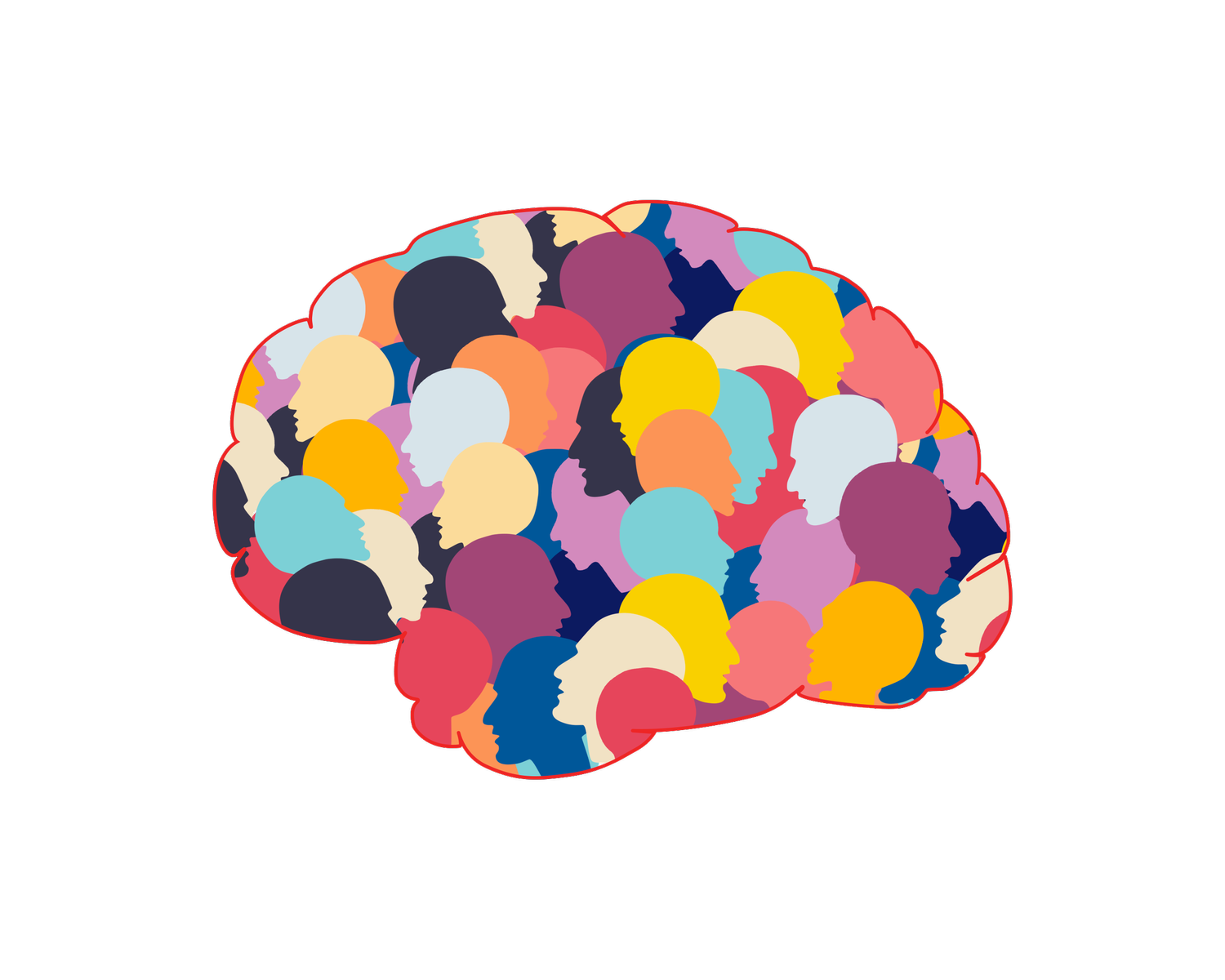The Columbia Social Neuroscience Lab investigates the brain basis of human sociality.
We study neural and psychological processes involved in social learning and connection. We use multiple methods to answer our questions, including brain imaging, natural language processing, and mobile sensing.
Recent Publications
Dorsomedial prefrontal cortex (DMPFC) prioritizes social learning during rest
Download Preprint
Sociality is a defining feature of the human experience: we rely on others to ensure survival and cooperate in complex social networks to thrive. Given our strong need to understand the social environment, might there be brain mechanisms that help ensure we quickly learn social information as soon as we can? We investigated whether brain regions spontaneously prioritize social learning during memory consolidation. Participants underwent fMRI scans while viewing scenes from the documentary film "Samsara." The dorsomedial prefrontal cortex (DMPFC)—a key node of the brain’s default network—reinstated the social scenes from the documentary during early rest, and strongly predicted social memory performance. This study updates memory consolidation theories and enhances our understanding of default network function, highlighting our innate drive to comprehend our highly social world.
Individuals who see the good in the bad engage distinctive default network coordination
during post-encoding rest
Download Publication
Coping with negative experiences is crucial for well-being. Our study shows that how people’s default network responds after a negative event predicts whether they see the silver lining. Directly after hearing about life’s hardships, people who end up with negative interpretations use this network in a consistent way while people with positive interpretations engage it idiosyncratically. Those who find the positive in negative situations may do so because they view them through their own unique perspective after the event.
Keeping up with others’ perceptions of the Kardashians: Lonely individuals’ neural representations and language use do not reflect the zeitgeist
The term "zeitgeist" in German refers to shared perceptions and cognitions within a culture. Subjectively, loneliness involves feeling that one's views are not shared. Do lonely individuals’ views actually deviate from the zeitgeist? Our study shows that lonely people have unique neural and semantic representations of cultural figures, differing from the group consensus. Loneliness is associated with distinct neural patterns of well-known cultural figures in the medial prefrontal cortex, a region associated with social knowledge (Studies 1A and 1B, N=40 each). Lonelier participants, in Study 2 (N=923), also use unconventional language to describe well-known figures when a strong group consensus exists. These findings validate lonely individuals' sense that their views are not in sync with the social world around them. Loneliness may not only result from poor relationships but also from feeling disconnected from widely shared cultural views, the zeitgeist.
Get out of my head: social evaluative brain states carry over into post-feedback rest to promote learning what others think of us.
Download Preprint
Learning how others perceive us helps us tune our behavior to form adaptive relationships. But which perceptions stick with us? And when in the learning process are they codified in memory? We leveraged a popular television series – The Office – to answer these questions. Viewers of The Office 1) reported which characters they identified with, 2) underwent neuroimaging while finding out which characters other people thought they were like, and 3) completed rest scans. Participants remembered more feedback inconsistent with their self-views (vs. views of others). Although neural activity while encoding self-inconsistent feedback did not meaningfully predict memory, returning to the inconsistent self feedback during subsequent rest did. During rest, participants reinstated neural patterns engaged while receiving self-inconsistent feedback in the dorsomedial prefrontal cortex (DMPFC). DMPFC reinstatement also quadratically predicted self-inconsistent memory, with too few or too many reinstatements compromising memory performance. Discovering others see us differently than we see ourselves can be stressful and re-experiencing discordant perceptions in the DMPFC too much may interfere with social memory consolidation.
Personalities converge during enjoyable conversations
Download Preprint
Our interactions with others can affect how we see ourselves. Previous research has mainly looked at how interactions shape a given person’s self-perceptions. This approach may miss meaningful changes in self-views that co-occur among groups of people when they engage in everyday social exchanges, such as conversations. In fact, because conversations involve a back-and-forth exchange of ideas, we wondered if our self-views mutually change when we talk to someone. We found that when people talk, their self-views become more similar. We call this the "inter-self alignment" effect. In a four-person conversation setup, participants ended up with more similar self-views after talking compared to before. Also, the more two people's self-views converged, the more they enjoyed the conversation and wanted to talk again. This effect depended on both people’s self-views becoming aligned; if one person aligned with all their partners, it didn't necessarily mean they enjoyed all their conversations. These results show that conversations momentarily align self-perceptions, and as people develop shared identities, they want to keep the conversation going.







